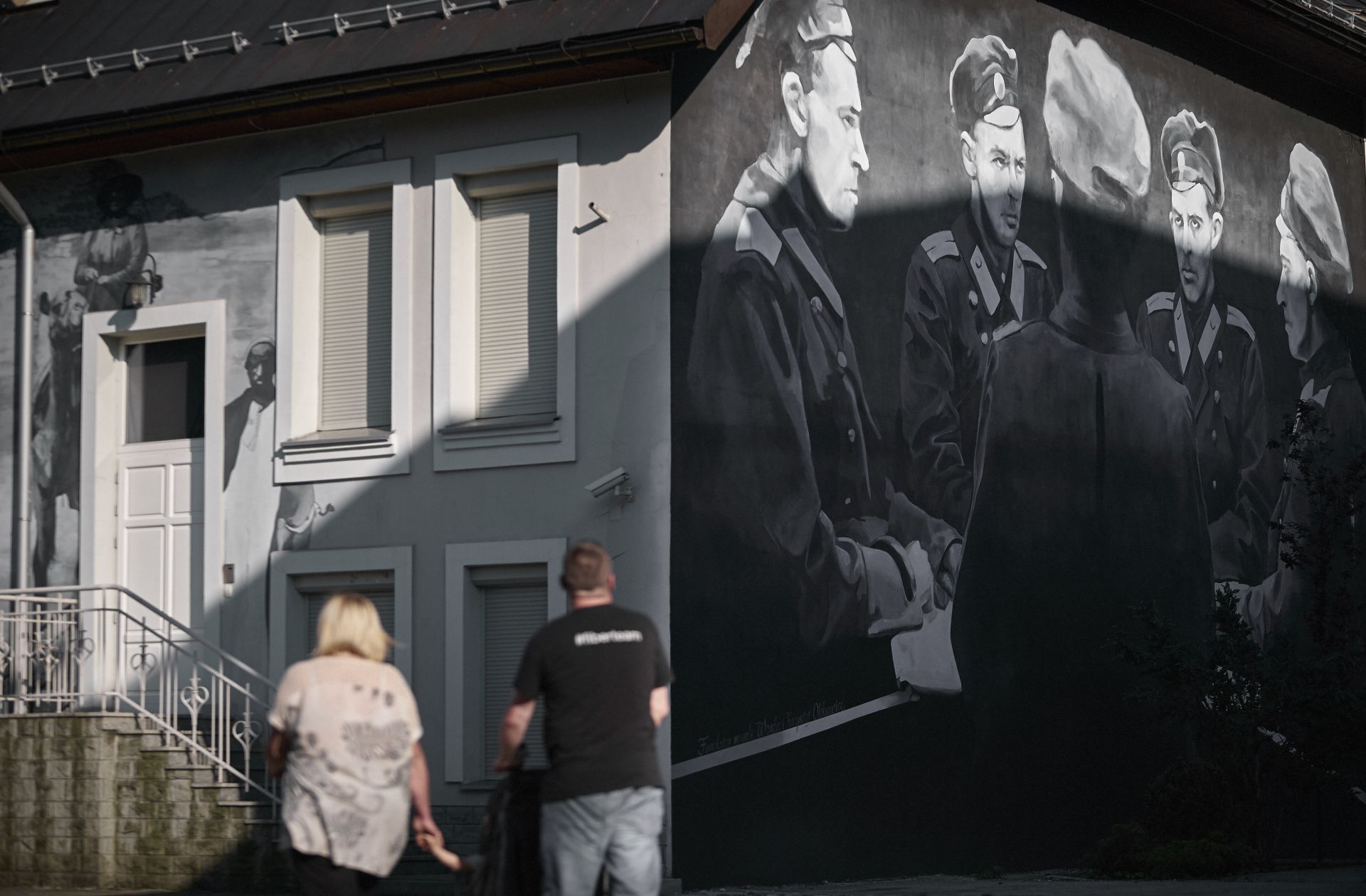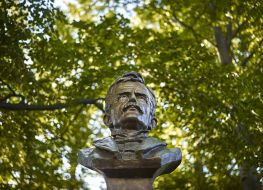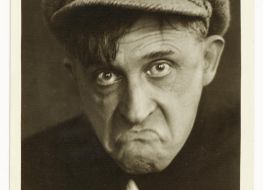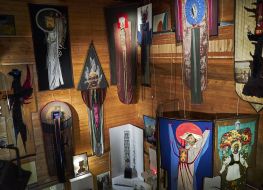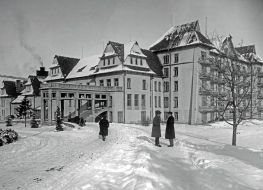We start our tour at the Dr Andrzej Chramiec roundabout, and then walk uphill along the Chramcówki, Jagiellońska and Dr Tytus Chałubiński streets, all the way up to the pope John Paul II roundabout.
Chramcówki - the street took its name from one of the highlander clans. Its most eminent member was Dr Andrzej Chramiec (1859-1939), the first highlander who boasted academic educationand built a hydrotherapy facility in Zakopane. He also served as the first environmental consultant and issued a decree on the mandatory construction of chimneys in the highlanders' huts. At the turn of the 19th c. Dr Chramiec's facility became a hub of cultural and social life in Zakopane. Presently, a local government authority is accommodated there, sharing the premises with The Witkacy Theatre. To access the former hydrotherapy facility one needs to turn left from the Chramcówki street just by the Church of the Divine Mercy.
Kazimierz Przerwa-Tetmajer, a poet, used to live for a spell in Dr Chramiec's facility. He was tremendously popular with women. Ladies, truly fascinated by the handsome author of an erotic poem "I Like It When a Woman...", and a collection of short stories "On the Rocky Podhale", written in the Highland dialect, would habitually be lurking around the door to his quarters to spy which one of numerous beauties would happen to be paying him a visit, or whether he might possibly be coming down for breakfast.
The Witkacy Theatre, Chramcówki 15 st.
It opened in 1985. The ultimate inspiration and frame of reference for the actors, directors and the Theatre's management has always been Stanisław Ignacy Witkiewicz - Witkacy; a painter, portraitist, photographer, playwright, novelist, philosopher, theorist of art and critic; the author of the Pure Form theory. Witkacy has always been a sparkling gem within Zakopane's social fabric. His father, Stanisław Witkiewicz, the creator of the Zakopane style in architecture, his Godparents - famous actress Helena Modrzejewska and a most celebrated highlander - Jan Krzeptowski Sabała, were a notable part of the reason.
We continue along the Chramcówki street to the Home Army roundabout, by which the coach and railway stations are located, and then further uphill, along the Jagiellońska street. After some 400 m. we turn right where a bulky and rather stately looking wooden villa Konstantynówka readily leaps to the eye, built in 1900 to the original design of Stanisław Witkiewicz, presently accommodating a restaurant. Right behind it there is The Władysław Hasior Gallery.
The Władysław Hasior Gallery, Jagiellońska 18b st.
Branch of the Tatra Museum, phone: +48 18 20 668 71
The gallery of works of the artist born in 1928 in Nowy Sącz, since his youth strongly associated with Zakopane (in 1952 he graduated from the celebrated Kenar High School of Arts here). The author of original monuments and outdoor sculptures. Fire, water and sound always play a pivotal role in all Hasior's installations. A few of those are definitely well-worth brining up, e.g. famous and much controversial "Pipe Organ" located at the Snozka pass along the Nowy Targ - Nowy Sącz highway, or "Flaming Birds" in the coastal town of Koszalin. The gallery came into being through a conversion of the premises of the former "Warszawianka" sanatorium, built in 1935. Its adaptation yielded several multi-level interiors for exhibition purposes, frequently accommodating various musical events. The artist also had his apartment and studio on the same premises. The Gallery opened to the public in February 1985. The venue is regularly used for film screenings and public meetings with authors.
Walking further along the Jagiellońska street we eventually pass by a large aquapark facility built on the slopes of Antałówka, to our left. We then turn right and continue walking along the Chałubińskiego street. On the left-hand side we pass by the twin Tyrolean style villas built in 1894, and the "Rialto" villa built in 1897-1898 to the original design by Stanisław Witkiewicz. A bit higher up, also to the left, there is the "Palace" guest-house, built in 1930, where Arthur Rubinstein, a much celebrated pianist, liked to stay when visiting Zakopane. During WWII, the Gestapo had its HQ there. Many locals from the entirePodhale region were held in detention there, subjected to torture, and executed on the premises. The exact number of victims has never been established, though. On the initiative of the late Dr Wincenty Galica, once himself a detainee in the notorious "Palace", a Tatra courier and an ardent patriot, a memorial chamber was established there
The story of the inscription on the wall discovered in one of the detention cells in the "Palace"
An 18-year-old Helena Błażusiak from Szczawnica, detained in the "Palace", carved the following inscription on the cell wall:
"Oh, Mum, hold back your tears,
I put my trust in Our Lady,
To give me strength and succour"
Many years later her words inspired Henryk Mikołaj Górecki, an outstanding Polish composer, to have them included in his "Symphony of Sorrowful Songs" - a musical piece of world renown met with popular acclaim.
At the junction of Chałubińskiego and Zamoyskiego streets, to our right, there is another landmark - aMonument to Dr Chałubiński. The last stop on our way is the Centre for Nature Education of the Tatra National Park.
Centre for Nature Education of the Tatra National Park, Chałubińskiego 42a st.
phone: +48 18 20 233 12
Interactive design of this venue makes it possible to gain multiple insights into the world of the Tatras. Films screened in 3D, the largest available 3D mock-up of the Tatra Mountains range, a special "discovery room" furnished with plenty of multimedia and educational games, "A Year in the Tatras" permanent exhibition - these are just some of many attractions awaiting all keen visitors to this truly unique place.
 Dostateczna
Dostateczna





